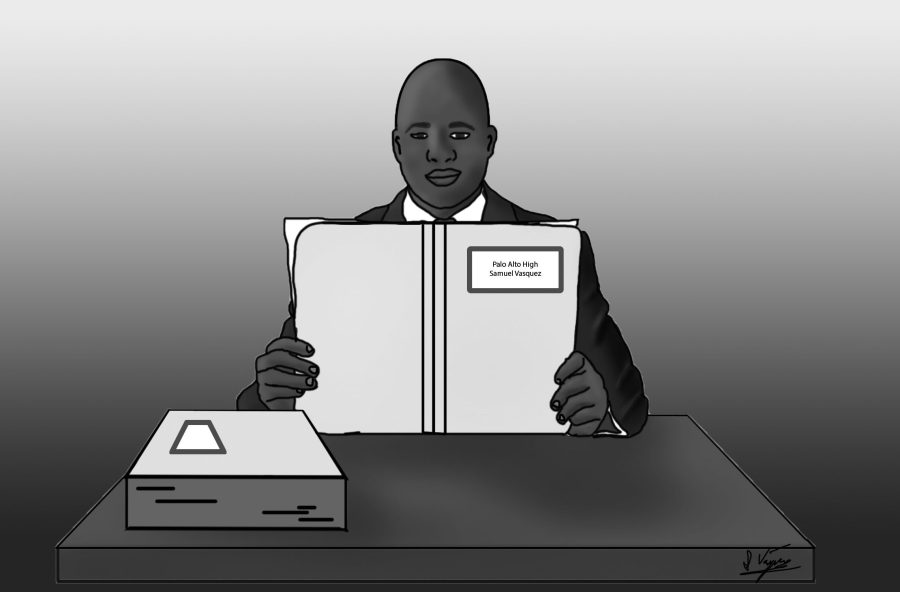Springtime marks the beginning of sports such as track and field, badminton and swimming. However, asking teachers for letters of recommendation is often overlooked as a sport. When asking for their letters, students strategically intercept their teachers at the end of class, drop by their offices bearing gifts or corner them at the vending machines; as a second semester junior, I participated in this practice.
In order to make their college applications as appealing as possible, students often take standardized tests multiple times or seek the aid of tutors and college counselors. However, one important aspect of the application process is left out of the students’ control: the teacher letter of recommendation.
Because some admissions officers do not have access to in-person interviews, letters of recommendation demonstrate to college admissions officers who students are, not just through their rankings or scores. In fact, the letters showcase what students will offer to the campus as learners and participators.
As a soon-to-be-senior, I have had the pleasure of asking two teachers for letters of recommendations. Oblivious to what happens behind the scenes, I had expected my portion of the job to be completed as soon as my teachers accepted the task. I soon realized that this was not correct.
In fact, in my case, the quality of my letter is proportionate to the amount of effort and time I put into answering lengthy questions and collecting past coursework.
Of course, the ideal teacher to write such a letter would be the one with extensive knowledge of and consistent interaction with the student; however, this personal connection is very often not realistic. Teachers may cycle through hundreds of students each semester, which may result in an inability to foster close relationships with individual students. Especially at Paly, where most students are college-bound after graduation, the workload of the application process inevitably falls upon our teachers.
For example, World Literature and Communications teacher Melissa Laptalo has written upwards of 40 letters each year.
Although teachers do not want to reduce students to common generalizations in their letters of recommendation, they often face the difficulty of constructing thoughtful letters in absence of the necessary tools. Laptalo credits her self-created form for students to fill — complete with questions and a list of coursework — as what streamlines and ameliorates her process.
“I felt like I needed to do right by my students and I really worried about it and labored over it,” Laptalo said “It probably took me about two hours to write one letter [when I first started] and now it probably takes me 20 to 30 minutes,. If I didn’t [use the form], it would probably take me days to write a letter.”
If students wish to receive optimal letters of recommendation, they must assume as much responsibility for the quality of the letter as the teacher does. Although teachers and advisors are the ones who physically write the letters, they will lack the personalization that admission officers look for without students’ guidance.
“The reflective questions I ask are really interesting to me because sometimes [the students] experience something in my class that I am totally unaware of,” Laptalo said.
With answers from survey questions and past coursework, Laptalo aims to “discuss some really specific examples [of] either work they produced or something that happened in class that highlights their strengths in her letters of recommendation.”
Another issue regarding the topic of letters of recommendation is that the process to submit short forms needs to be expedited by creating a uniform method of collection.
Short forms are written by students’ coaches, employers or any individual aid teacher advisors who may have less interaction with students compared to teachers writing the counselor letters.
Currently, the standard short form paper slip is only one of the many systems teacher advisors use to collect outside information, in addition to Google Forms or simple emails.
“Every student who asks for a short form has a different teacher with a different system [so] even just navigating that is difficult,” Laptalo said. “ [Each teacher advisor] might have different deadlines as well.”
Therefore, in order to create a more streamlined system of communication between teachers and advisors, the short form system is also in need of upgrade.
With varying amounts of technology available to the Paly community and the use of the Common App as a guide, a website for short form submissions should be produced, catering to the different needs of teachers, students and advisors.
Paly can benefit from more students taking on the responsibilities in the letter of recommendation process as well as creating a standardized system of short form submission.

